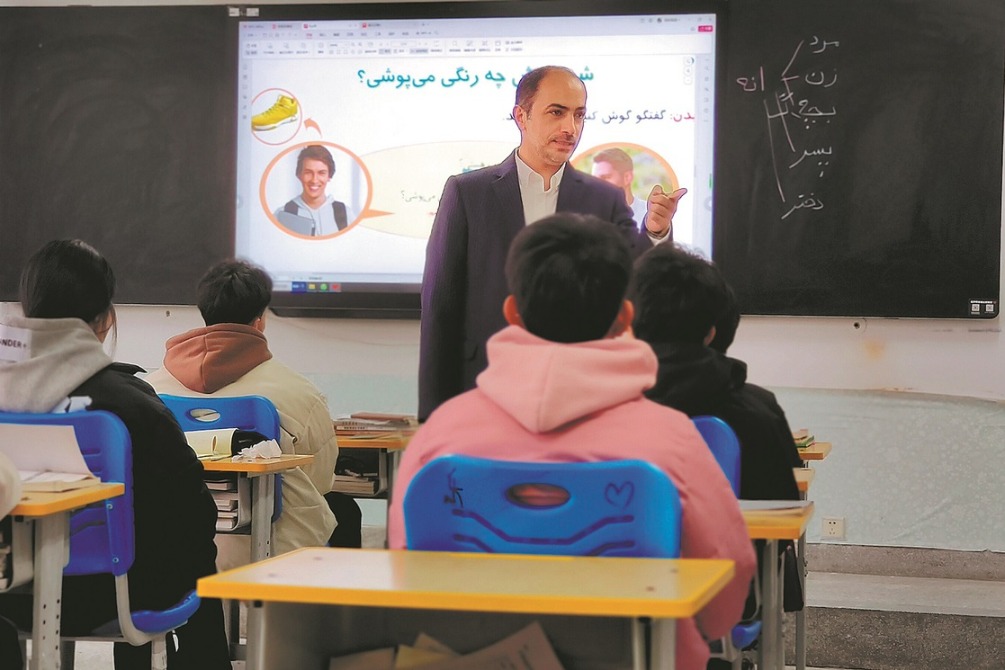About 2.3 million Nigerians face severe food insecurity
By Edith Mutethya in Nairobi, Kenya | chinadaily.com.cn | Updated: 2021-05-20 14:20
About 2.3 million people in Niger are likely to be severely food insecure during this year's lean season because of conflicts, drought and floods, according to the UN Office for the Coordination of Humanitarian Affairs.
In its daily noon briefing on Tuesday, the UN agency said Tillabery and Tahoua regions of Niger, located along the Mali and Burkina Faso border, have been experiencing escalating cross-border attacks from non-state armed groups, causing acute protections concerns, human rights violations and increased internal displacement.
Between Friday and Monday, more than 10,000 people fled their homes in the western region of Tillaber, following violent attacks by non-state armed groups in Anzourou district, near the border with Mali, the agency said.
In January, the country experienced the first deadliest attack in Tillabery, since the insurgency began in the Maghred, after more than 100 people were killed in a single incident and more than 10,000 others were forced to flee their homes.
On February 21, during Niger's presidential election runoff, seven electoral commission members were killed and three others wounded, after their car drove over an improvised explosive device in Tillaberi.
In March, three attacks, carried out on 16, 21 and 24 by militants left at least 205 people dead. Subsequent attacks on April 18, May 3 and May 12, left 40 people dead.
According to the UN Office for the Coordination of Humanitarian Affairs, the number of internally displaced persons in Tillabery has nearly doubled, from 57,000 in December 2019 to 102,000 in May 2021.
The UN agency said about 3.8 million people need humanitarian assistance in the country of which 2.1 million are the most vulnerable.
It said aid agencies need $523 million to help the most vulnerable of which only 7 percent has been secured.
As of March, Niger's Tahoua and Tillaberi regions, hosted 204,000 refugees and internally displaced people, according to the UN High Commissioner for Refugees.
Despite rich in mineral resources like uranium, gold, coal, iron, limestone and phosphates, Niger is listed among the world's poorest countries.
The World Bank statistics indicate that the country's extreme poverty rate stood at 43 percent in 2020, affecting more than 10 million people.
The bank adds that Niger's economy is not well diversified and depends primarily on agriculture, which accounts for 40 percent of its gross domestic product.
Additionally, 60 percent of Niger's population still live below the poverty line of $1 a day, while 85 percent live on less than $2 a day, despite the country having the highest fertility rate, according to the Open Society Initiative for West Africa, an organization that promotes democratic values and which is headquartered in Dakar, Senegal.
Despite Tillaberi being the most violent and conflict-prone part of the Niger, it's one of the main agricultural production, producing 75 percent of the country's rice and 18 percent of sorghum, millet and horticulture, the Open Society Initiative for West Africa states.
Presence of River Niger in the region among other water sources, makes Tillaberi a prime region for agricultural activities. Most of the country's pastoralism also takes place in the region. This has resulted in herder-farmer conflict over land disputes due to droughts.
Basically, Niger, Burkina Faso, and Mali in the Sahel are at the epicentre of one of the world's fastest-growing displacement and protection crises.
The region is already hosting nearly three million refugees and people displaced inside their own country according to the UN High Commissioner for Refugees.
























